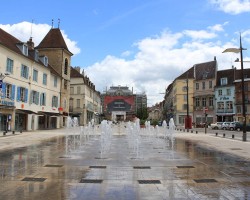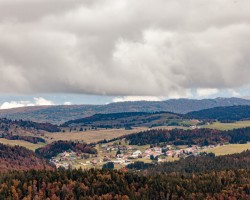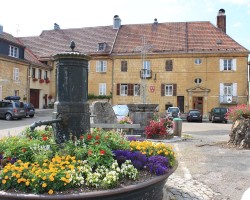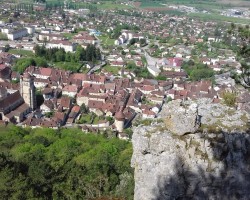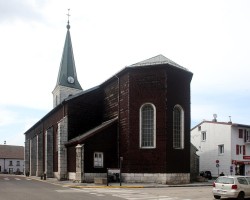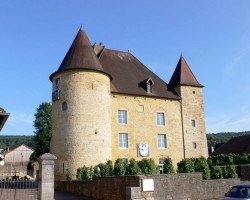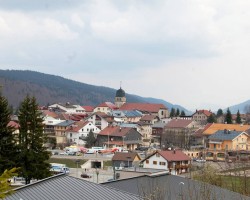Best time to go to Jura for a perfect weather and where to go?
When is the best time to go to Jura?
There is not really a best time to go to the Jura, as there are numerous activities possible throughout the year, and the landscapes are always beautiful. However, if you are allergic to the cold, it is better to go in the summer, when the weather offers beautiful warm and sunny days.
When to go to the Jura based on your interests?
- Summer is the perfect season for hiking or mountain biking in the Hautes-Combes and in the Haut-Jura Regional Nature Park. The multiple lakes will offer a perfect break for a well-deserved swim. And if you have energy to spare, water activities are plentiful on a river or a lake: water skiing, canoeing, kayaking, canyoning, paddle boarding or even a boat ride. For a peaceful visit, avoiding summer tourists and benefiting from an ideal climate, go to the Jura in September!
- Autumn allows you to enjoy the beauties of the Jura before the first snowflakes arrive. During this season, the mountains closely resemble the landscapes of Canada with a palette of colors that will amaze you! Forest walks will be the perfect opportunity to go mushroom picking, before touring the Jura Wine vineyards around Arbois for an epicurean interlude. Those who love local culture will step into a craftsman's workshop, while history enthusiasts will visit one of the many castles in the region.
- Winter is all about the pleasures of skiing and snow! Downhill or cross-country skiing, snowshoeing, snowball fights, Nordic walking, dog sledding rides... all in family-friendly resorts, nestled in pristine and wild landscapes.
- In spring, the melting snow gives way to beautiful landscapes and the awakening nature will offer you wonderful spectacles when the meadows are adorned with daffodils, crocuses, or wildflowers. It is at this time that waterfalls are at their most beautiful and whitewater sports enthusiasts can enjoy a rafting or canoeing trip.
Annual weather in Jura
For information about the climate and the weather city by city in Jura for a specific month, click on the corresponding line below:
| Month | Our opinion | View Details | |||
|---|---|---|---|---|---|
| January | 27°F to 43°F | very bad weather | |||
| February | 27°F to 47°F | very bad weather | |||
| March | 31°F to 54°F | very bad weather | |||
| April | 38°F to 63°F | tolerable weather* | |||
| May | 45°F to 67°F | tolerable weather* | |||
| June | 52°F to 76°F | tolerable weather* | |||
| July | 56°F to 79°F | good weather* | |||
| August | 54°F to 79°F | good weather* | |||
| September | 47°F to 72°F | good weather* | |||
| October | 40°F to 63°F | tolerable weather* | |||
| November | 36°F to 52°F | very bad weather | |||
| December | 31°F to 45°F | very bad weather |
Best time to travel to Jura by cities
Climate and Weather in Jura
Overall, the climate in the Jura is semi-continental with mountain influence. Bordering Switzerland, the department experiences significant temperature variations throughout the year: in winter, temperatures easily drop below zero and can exceed 25°C (77°F) in summer.
Due to its geography and relief, the Jura is subject to climatic variations:
- In the plain area covering Bresse and Pays dolois, the climate is considered semi-continental with some shelter, similar to Alsace. Less protected from westerly winds, the Jura plains experience a slight oceanic influence characterized by higher humidity.
- In the mountainous area, the influence is humid mountainous, which intensifies with altitude.
The average sunshine duration in the Jura is higher than in most other departments in the northern half of France. For example, Lons-le-Saunier enjoys 1900 hours of sunshine per year.
In terms of precipitation, the Jura is the most rainy department in France. Its geographical configuration gives it a microclimate characterized by high humidity and fairly frequent rainy episodes throughout the year. This phenomenon becomes particularly significant at higher altitudes.
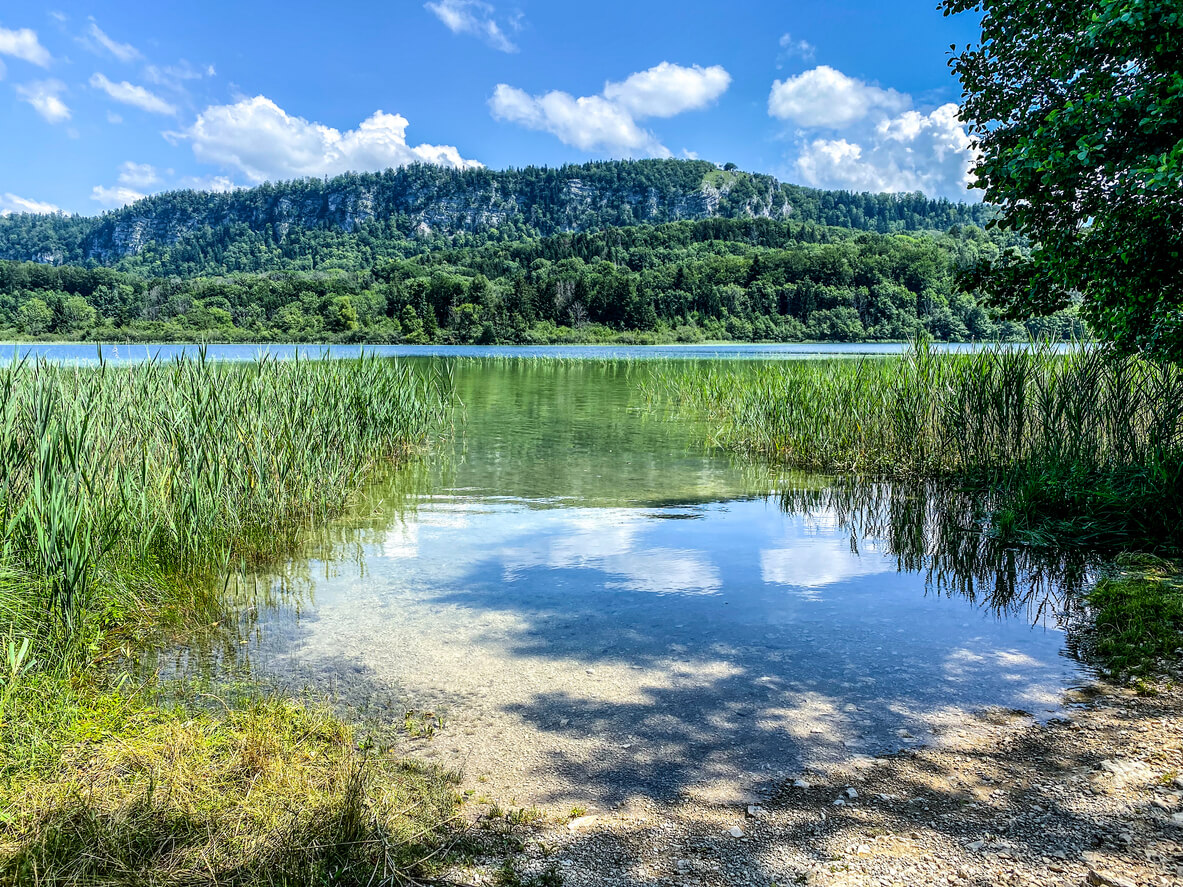
Summer in the Jura
In mountainous areas, summer is slow to arrive and relatively short. In the Haut-Jura Natural Park, it will be necessary to wait until the end of July for temperatures to exceed 20°C (68°F) during the day. At night, temperatures remain close to 10-12°C, even in the middle of August. During this period, the mountains experience a lack of sunshine due to the presence of clouds that generate thunderstorms and frequent rain.
In the plains, temperatures can frequently exceed 30°C (86°F) in sheltered areas, but averages hover around 25°C (77°F) in Lons-le-Saunier or Dole thanks to significant sunshine, comparable to that of the Lyon region. However, showers and thunderstorms remain frequent.
Autumn in the Jura
During autumn, the climate in the Jura sees temperatures quickly dropping, especially in the mountainous areas. For example, in Les Rousses, temperatures can drop to around 5°C (41°F) as early as October. Frosts and snowfall can be expected.
In the medium mountain areas and plains, the weather is milder with maximum temperatures reaching 17°C (63°F) in Lons-le-Saunier in October and 11°C (52°F) in Dole in November. In this part of the Jura, precipitation is less significant than in summer, and the sky is often clear.
Winter in the Jura
In the plains, sunshine is scarce due to persistent and sometimes freezing fog. As a result, temperatures struggle to rise: in January and February, they range between 0 and 6°C (43°F) in Dole, as in Lons-le-Saunier. However, snowfall remains low, with rarely more than 15 days of snow cover in the Dole region.
The mountains, on the other hand, benefit from good sunshine, but temperatures can drop below zero, especially in the Haut-Jura Regional Nature Park with average lows around -3°C in February. As throughout the rest of the year, precipitation is significant and falls in the form of snow for much of the winter.
Spring in the Jura
During spring, the weather in the Jura is characterized by a gradual rise in temperatures, but also precipitation. For example, in Nozeroy, it rains half of the month in May and June. In terms of temperatures, maximums hover around 12°C (54°F) in April, rising to nearly 20°C (68°F) in June.
In the mountains, spring is slow to arrive and it is not uncommon for snow to persist until May in the coldest areas of the high ranges.
Temperatures and rainfall in Jura
On these 2 graphs, we present the evolution of temperatures of Jura and month-by-month rainfall for the cities of Lons-le-Saunier, Dole, La Pesse, Nozeroy and Poligny.
Peak visitor numbers and tourist seasons in Jura
Find out when Jura has its high tourist season (the period when the influx of tourists is highest) and off-peak tourist season using our data and figures.
Tourist seasons in Jura
The months with low numbers of tourists are: January, February, March, April, October, November and December. The number of visitors to Jura is high in: May, June, July, August and September.
- Very low season in Jura: January, March, November and December.
- Low season in Jura: February, April and October.
- High season in Jura: May, June and September.
- Peak season in Jura: July and August.
Figure: Visitor index for Jura month by month
Where to go in Jura?
This table allows you to see the maximum temperature for each city and our opinion on the weather month by month (see colour legend below the table).
| Cities | jan. | feb. | mar. | apr. | may | jun. | jul. | aug. | sep. | oct. | nov. | dec. |
| Lons-le-Saunier | 43°F | 45°F | 54°F | 61°F | 67°F | 76°F | 79°F | 79°F | 72°F | 63°F | 52°F | 45°F |
| Dole | 43°F | 45°F | 54°F | 61°F | 65°F | 74°F | 77°F | 77°F | 72°F | 61°F | 52°F | 45°F |
| La Pesse | 40°F | 43°F | 50°F | 59°F | 65°F | 74°F | 77°F | 77°F | 70°F | 63°F | 52°F | 43°F |
| Nozeroy | 36°F | 38°F | 47°F | 54°F | 59°F | 67°F | 70°F | 70°F | 65°F | 56°F | 47°F | 40°F |
| Poligny | 43°F | 45°F | 54°F | 61°F | 67°F | 76°F | 79°F | 79°F | 72°F | 63°F | 52°F | 45°F |
| Saint-Laurent-en-Grandvaux | 36°F | 38°F | 47°F | 54°F | 59°F | 67°F | 70°F | 70°F | 65°F | 56°F | 47°F | 40°F |
| Arbois | 43°F | 45°F | 54°F | 61°F | 67°F | 76°F | 79°F | 79°F | 72°F | 63°F | 52°F | 45°F |
| Baume-les-Messieurs | 43°F | 45°F | 54°F | 61°F | 67°F | 76°F | 79°F | 79°F | 72°F | 63°F | 52°F | 45°F |
| Les Rousses | 36°F | 38°F | 47°F | 54°F | 59°F | 67°F | 70°F | 70°F | 65°F | 56°F | 47°F | 40°F |
| Orgelet | 43°F | 45°F | 54°F | 61°F | 67°F | 76°F | 79°F | 79°F | 72°F | 63°F | 52°F | 45°F |
| Saint-Amour | 43°F | 47°F | 54°F | 63°F | 67°F | 76°F | 79°F | 79°F | 72°F | 63°F | 52°F | 45°F |
| Saint-Claude | 41°F | 43°F | 50°F | 58°F | 61°F | 68°F | 74°F | 74°F | 68°F | 61°F | 52°F | 45°F |
| Salins-les-Bains | 41°F | 45°F | 52°F | 59°F | 65°F | 72°F | 76°F | 77°F | 70°F | 61°F | 50°F | 45°F |
| Cascades du Hérisson | 36°F | 38°F | 47°F | 54°F | 59°F | 67°F | 70°F | 70°F | 65°F | 56°F | 47°F | 40°F |
| Château-Chalon | 43°F | 45°F | 54°F | 61°F | 67°F | 76°F | 79°F | 79°F | 72°F | 63°F | 52°F | 45°F |
| Jura Mountains Regional Natural Park | 41°F | 43°F | 50°F | 58°F | 61°F | 68°F | 74°F | 74°F | 68°F | 61°F | 52°F | 45°F |
| Pic de l'Aigle | 36°F | 38°F | 47°F | 54°F | 59°F | 67°F | 70°F | 70°F | 65°F | 56°F | 47°F | 40°F |
| Champagnole | 36°F | 38°F | 47°F | 54°F | 59°F | 67°F | 70°F | 70°F | 65°F | 56°F | 47°F | 40°F |
| Clairvaux-les-Lacs | 43°F | 45°F | 54°F | 61°F | 67°F | 76°F | 79°F | 79°F | 72°F | 63°F | 52°F | 45°F |
| Jougne | 40°F | 41°F | 49°F | 58°F | 63°F | 70°F | 74°F | 74°F | 68°F | 59°F | 50°F | 43°F |
Legend:
good weather
tolerable weather
bad weather
very bad weather
About Jura
What can I do in Jura?
Beaches / swimming
Nature and countryside
Culture and heritage
Sports
Family travel
Gastronomy
Is this weather information for Jura reliable?
Climate data for Jura has been gathered every day since January 2009. The analysis of these meteorological data for Jura allows us to determine the average for each month in Lons-le-Saunier, Dole, La Pesse, Nozeroy, Poligny, Saint-Laurent-en-Grandvaux, Arbois, Baume-les-Messieurs, and 17 other cities.
So yes: this data is reliable except in cases of temporary climate disruption in the region.

